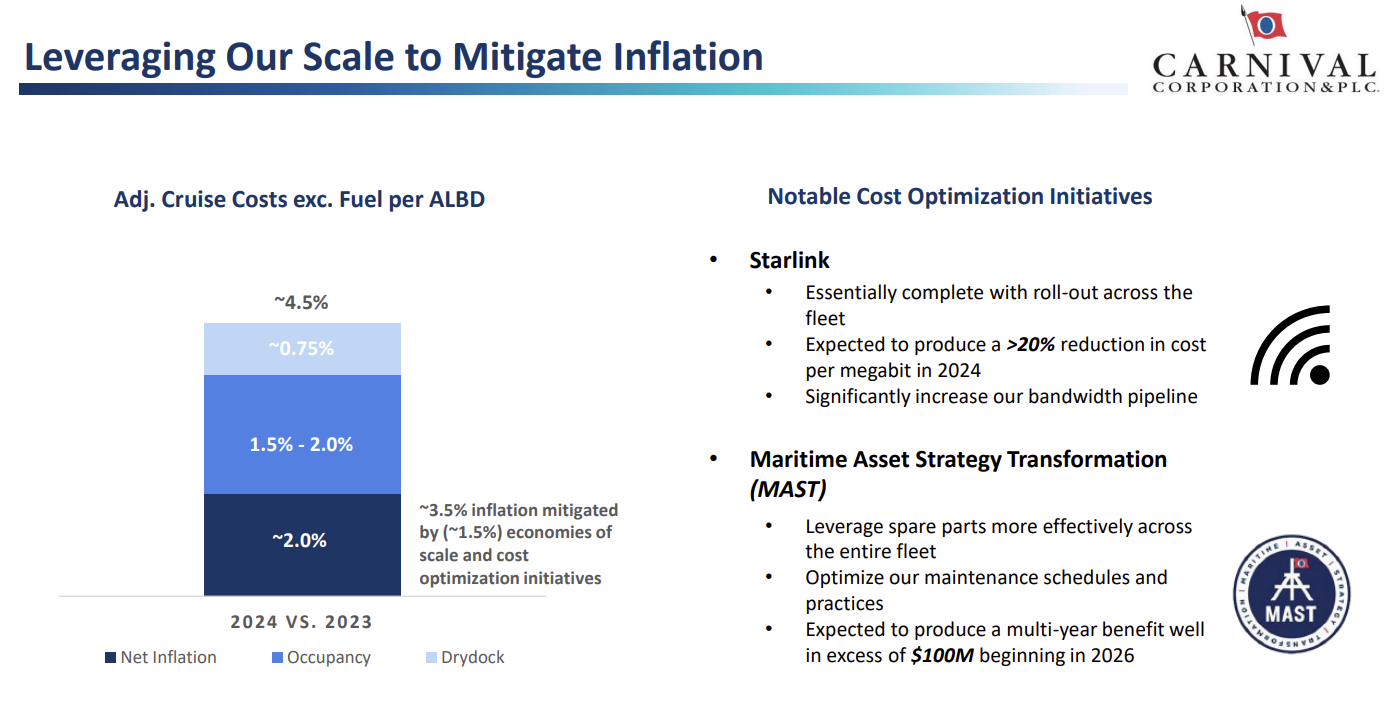Carnival Corporation, known for its family of cruise lines, is implementing a centralized system to optimize the management of equipment and machinery across its brands and ships.
The implementation of Maritime Asset Strategy Transformation (MAST) will be carried out in 2024 with savings being delivered in 2025 and 2026. The company sees a multi-year benefit of savings north of $100 million.
Carnival's project highlights how companies are managing transformation efforts with balanced approach between growth and efficiency.
Carnival, which has recovered from the COVID-19 pandemic, operates AIDA Cruises, Carnival Cruise Line, Costa Cruises, Cunard, Holland America Line, P&O Cruises (Australia), P&O Cruises (UK), Princess Cruises, and Seabourn. The plan for Carnival is to leverage its scale to offset inflation as drives revenue growth.
The system was outlined on Carnival's fourth quarter earnings conference call.
"MAS is a centralized system developed to optimize the management of equipment and machinery across all brands and all of our ships. MAS will allow us to leverage spare parts more effectively across the entire fleet and optimize our maintenance schedules and practices, all of which will strengthen our efficiency and reduce unplanned maintenance overtime," said Carnival CEO Josh Weinstein.
Carnival's fiscal 2023 revenue hit an all-time high of $21.6 billion with a net loss of $74 million. The company has ramped up its advertising in the last year and has more than two-thirds of its 2024 revenue booked. The company has also been paying down debt and ended 2023 with a bit more than $30 billion of debt, ahead of projections earlier this year.
For 2024, Carnival said it will see higher ticket prices, onboard spending and occupancy rates across its brands while maintaining advertising spend at 2023 levels. While the MAST implementation is worth watching, Carnival is looking to save money by using Starlink for Internet access and continue to consume less fuel.



